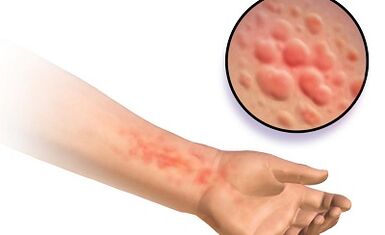Helminthiasis is a disease in which parasites develop in the human body.With the wrong lifestyle of a person, helmink develops in the gangstural system.Various diseases may occur in the background of parasites.
General information
The occurrence of pathology in the urinose cavity is diagnosed in the background of the effects of echinococci, philiria and Schistos.In most cases, the infection with parasites is performed by a stool-oral route.
Helminants also fall into the body through water or food.In most cases, the disease occurs in people who consume unwashed vegetables and fruits.
Types of parasites in the human genitourinary system
Most parasites are damaged by the digestive system.However, there are certain types of Helmintes invasions that penetrate the human urogenitinic system and begin to parasitize it.
Interobiosis

Enterobiosis belongs to the category of parasitic diseases that develop in the gastric intestine tract.Early treatment of the disease, the parasites penetrate other organs, including the gangiturinary system.
The occurrence of pathology is diagnosed with the effects of Pinworms.The length of the worm reaches 5 millimeters.
The parasites violated the integrity of the wall of the urinated cavity.Patients are diagnosed with bleeding for a longer period of time.Tips lead to severe kidney diseases.
During the long period of the disease, cancer can be observed in the gangiturinary system.In most cases, the complication of pathology is urinary tract incontinence.
Filyariosis
Filyariosis is a helmin that can reach 45 centimeters.The carriers of larvae are mosquitoes that transmit them during bites.
Subsequently, active reproduction and parasitization of helmints can be observed in the gangiturinary system.The disease is characterized by the presence of several stages of development.
When the larva enters the human body, the lymph nodes swell.The pathological process is also accompanied by rash on the skin.
If you do not perform treatment in time for the disease on time, this lymph nodes will increase it to critical dimensions and break.
A fairly common complication of pathology is Hiluria, accompanied by a combination of urine and lymphatic.The lymphatic accumulation was then observed in the abdominal cavity.In the final stage, the appearance of ivory disease is diagnosed.
The removal of worms is carried out through the genitourinarinal system.This disease is diagnosed with pain.Blood impurities appear in the urine.
Shistosomosis

A disease occurs when the wormholes are exposed to parasitic in the circulatory system.For a long time, the parasite can reach 20 centimeters.Fertilizing up to three thousand eggs each day.The absorption of larvae is carried out through the walls of the urban cavity.
The penetration of parasites is carried out through poor quality water.One of the characteristics of helmatints is that they penetrate the body through the microads.
At the site of the lesion, the development of the inflammatory process, accompanied by redness and itching, can be observed.
When parasites are moved through the gangiturinary system in patients, they diagnose the appearance of general malaise.Patients also complain of abdominal pain.
In the next stage, the disappearance of the symptoms of the disease is observed.When 6 months have passed after the infection, a small amount of blood is diagnosed in the urin, which gradually increases.
Patients are observed in the Schista parasite cystitis, tumors, the gangiturinar system, kidney inflammation and the appearance of stones.Damage to the genitals in women can be diagnosed with parasites.
Echinococcosis
This disease develops by drinking unwashed vegetables and fruits.It seems to eat raw meat and fish.The spread of parasites is carried out through blood through the human body.
During the period of pathology, people develop unpleasant symptoms.With pathology, people complain about the development of malaise and weakness, even when they are familiar with familiar matters.
The worms cause kidney pain.Patients also complain of the appearance of skin itching.
The symptoms of the disease
If the urethra is affected by the parasites, this will lead to the occurrence of appropriate symptoms.In the early stage of the disease, severe itching is observed.
Patients can be rash and redness of epithelial cover.Often, genitourinarinal parasites lead to growth of lymph nodes.The infection of the bladder is not immediately observed after the helmink enters the human body.
In most cases, the disease is accompanied by painful and itchy rash on the skin.The epidermis may blush in the area of parasites.
Patients complain about the occurrence of discomfort during intercourse.In the genitals, when the parasites penetrate, rashes appear.In women, the appearance of vaginal bleeding is diagnosed.
Blood contamination appears in patients' urine.The pathological process is accompanied by nerve disorders.The bladder occurs in the patients.
Patients complain of the appearance of headache or migraine during pathology.It is often accompanied by various nervous disorders.Patients complain of constant fatigue and sleep instability.
Pathology is reduced in patients with appetite, which leads to rapid weight loss.The disease is accompanied by diarrhea, which can be replaced by constipation.Often, after penetrating the parasites into the body, patients observe the increase in body temperature.
Parasites observe the development of appropriate symptoms in the human geniturinary system, which requires an emergency relationship to the doctor.
Treatment
The therapy for the pathological condition begins with the diagnosis.Instrumental and laboratory methods are used for this purpose.The diagnosis is made after 1.5 months after the estimated infection.
Immunological studies described in advance that are determined by antibodies against worms.
Choosing a method of direct treatment of the pathological process depends on the types of worms provoked.In the case of cystostomosis, the disease is only healing under stationary conditions.
In this case, medication therapy is used.Patients are recommended for treatment with special anthelmintic drugs.
The patient is recommended in several treatment courses to ensure full treatment of the Helmint invasion.
Pathogen and symptomatic treatment are recommended to improve the performance of the damaged body.
If the patient is infected for a second time, therapy is performed using antibacterial drugs for tetracycline row.Antihistamines are recommended to enhance the therapeutic effect.
If the patient has symptoms of philariosis, he should be hospitalized.To reduce lymphostasis, the swollen limb is secured in an increased position.However, it is recommended to use compression bedding.
In difficult cases, the treatment of the disease is surgically performed.It is recommended to use an antiparasite drug to eliminate parasitic infection.
If the patient has an allergic reaction to the drug, the use of antihistamines is recommended.
Parasites of the genitourinary system develop in extremely rare cases.But they are very dangerous.This is the reason why, in the case of the first symptoms of the helmint invasion, the patient should perform adequate tests.
Only after determining the type of pathogen is prescribed the patient according to the severity of individual characteristics and pathology.






































